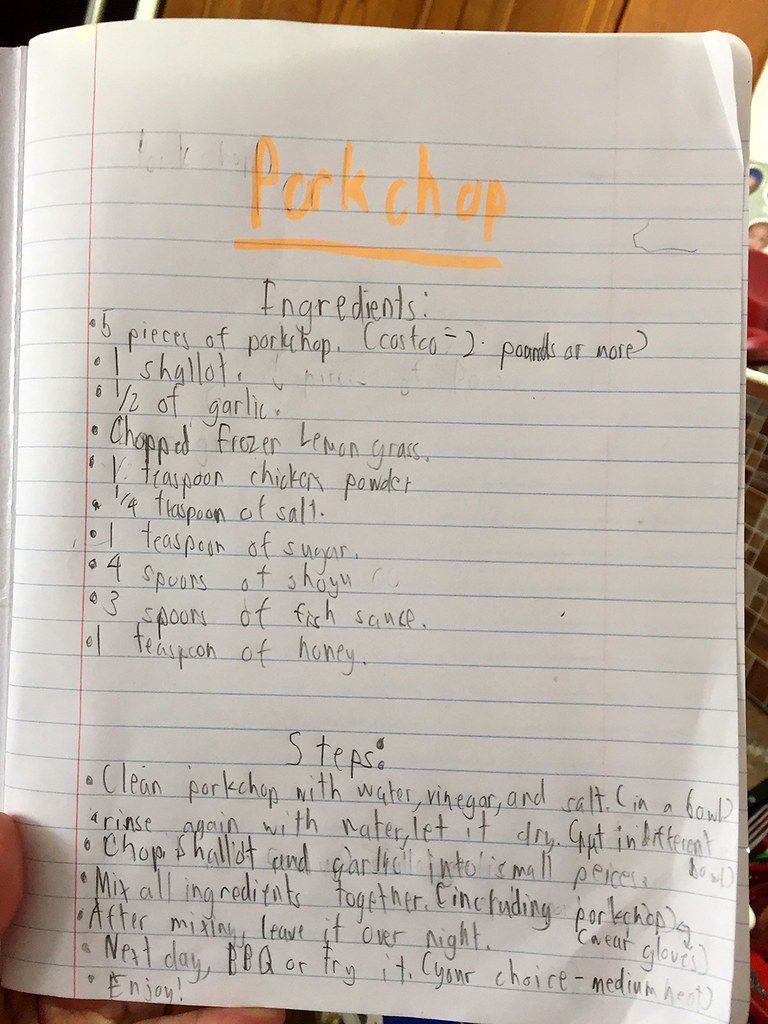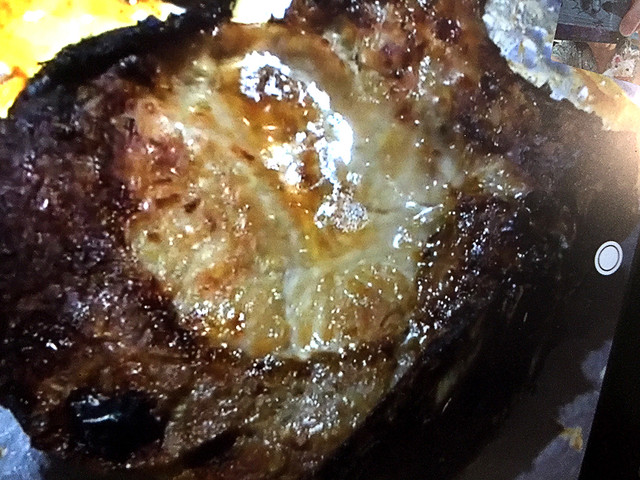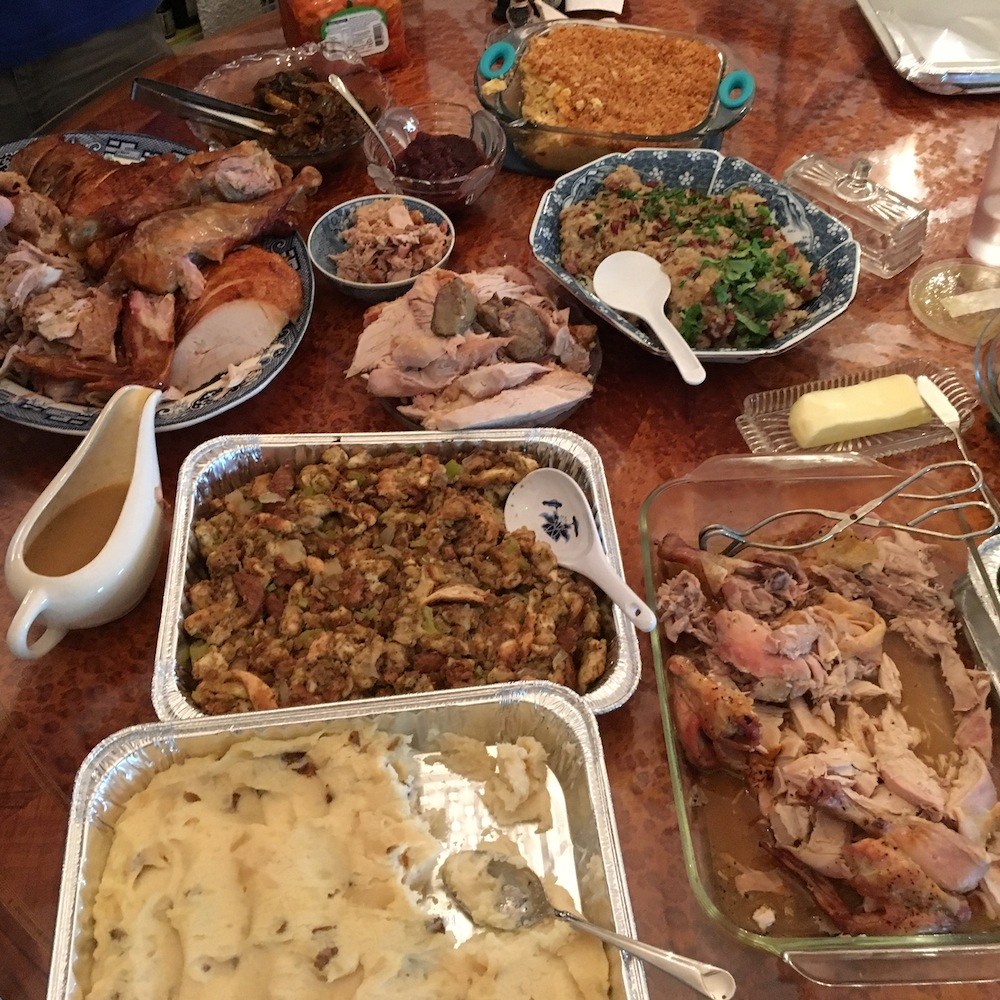 Every Thanksgiving, Aunty makes this mochi rice stuffing for friends and family. The very first year, we used it to stuff the turkey that Uncle and Cousin Mike were in charge of – using a large hibachi grill with dome cover. Because the turkey was stuffed, it took way longer to cook and the 2 “boys” came in sunburned, quite drunk with too many beers, and the stuffing oozing out and charred.
Every Thanksgiving, Aunty makes this mochi rice stuffing for friends and family. The very first year, we used it to stuff the turkey that Uncle and Cousin Mike were in charge of – using a large hibachi grill with dome cover. Because the turkey was stuffed, it took way longer to cook and the 2 “boys” came in sunburned, quite drunk with too many beers, and the stuffing oozing out and charred.
It was really really delicious, though, but the following years, we stopped stuffing it into turkeys in order to save on cooking and drinking time.
We use Mow Lee & Co. lup cheong from a hole in the wall place at 774 Commercial Street in San Francisco . Any brand will do, but Aunty really likes the freshness and taste of this one.
Here is the link to Hawaiian Electric’s recipe, or follow along with Aunty below.
Ingredients:
2 1/2 cups mochi rice
2 1/2 cups water
6 large dried mushrooms, soaked (start the soaking first or use fresh)
3 slices bacon, chopped
1 cup chopped onions
1/2 cup chopped green onion
1/2 lb diced lup cheong (Chinese sausage)
1 cup chopped water chestnuts
2 tablespoons chopped Chinese parsley
2 teaspoons soy sauce
1 1/2 teaspoons salt
1/2 teaspoon sugar
Dash of pepper
Soak the 6 large dried shiitake mushrooms, following package directions. The Korean shiitake mushrooms from Costco require soaking it in just boiled water for quite a while. Do this part early because sometimes those mushrooms seems to take forever to soften, or use fresh ones.
Cook the 2 1/2 cups of mochi (sweet) rice in your rice cooker. I usually do 5 cups so we have more stuffing. Sometimes I soak before cooking, but many times I don’t remember to prep the rice so I just cook it like regular.
Chop, chop, chop all the ingredients. This is the junk part but if you prep it all ahead of time, it becomes a pleasure to cook rather than a chore. Chop the non greasy stuff first, i.e. onions, green onions, mushrooms, water chestnuts, Chinese parsley. Then chop the lup cheong, then the bacon. I put the chopped onions, green onions, lup cheong, and mushrooms in a big bowl together, and the water chestnuts and Chinese parsley in a smaller bowl together. The bacon goes right into the pan.
Using the biggest non stick pan you have and a large wooden paddle, stir fry the bacon until crisp. Then, stir fry in the big bowl of chopped stuff – onions, green onions, lup cheong, and mushrooms. Cook until onions are clear.
Add the cooked mochi rice in dollops or chunks and stir fry, breaking up the clumps of rice and then add the water chestnuts, Chinese parsley, soy sauce, salt, sugar, and dash of pepper.
Stir fry until you are happy. Your arms might be tired from all that stirring, but the aromas and deliciousness are your reward. Serve and enjoy!


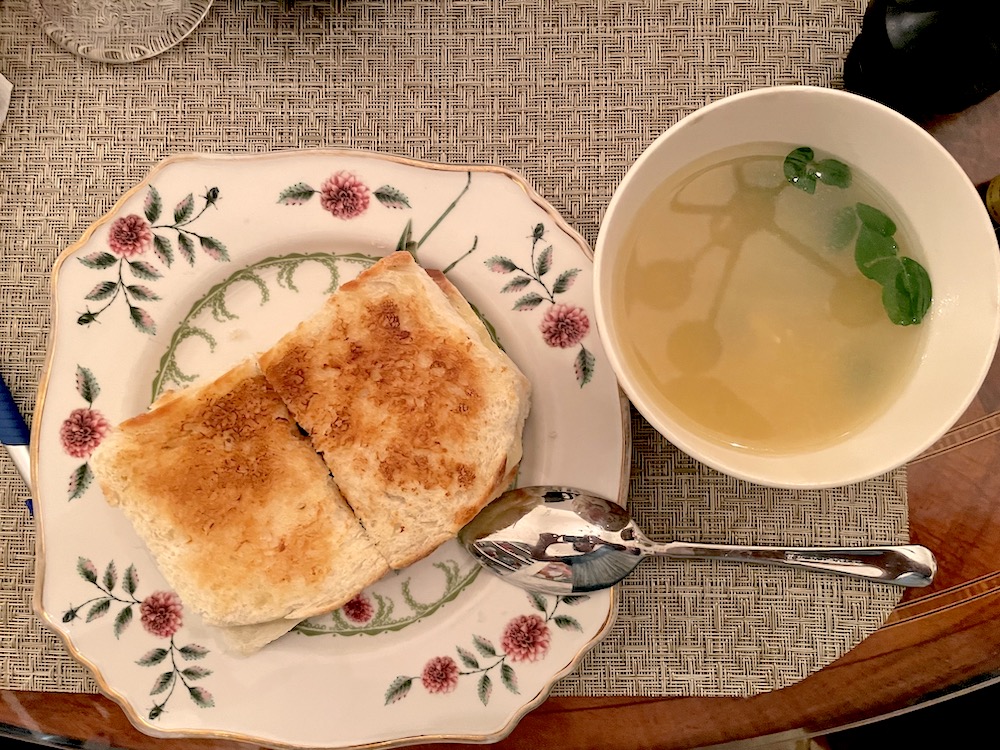
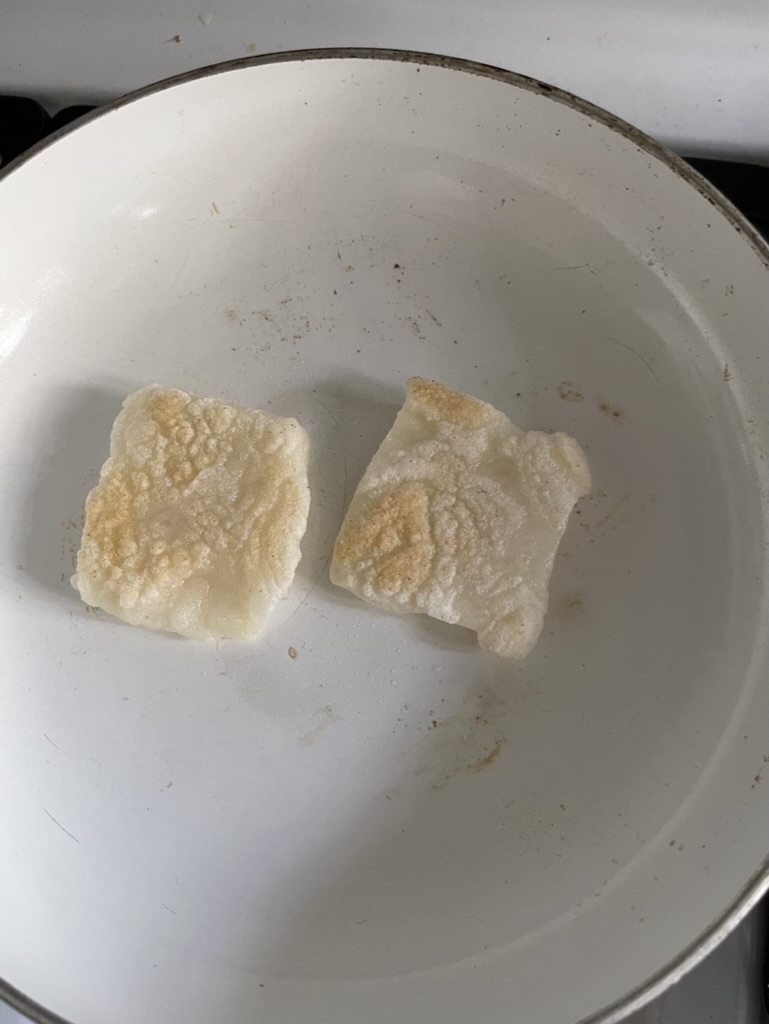
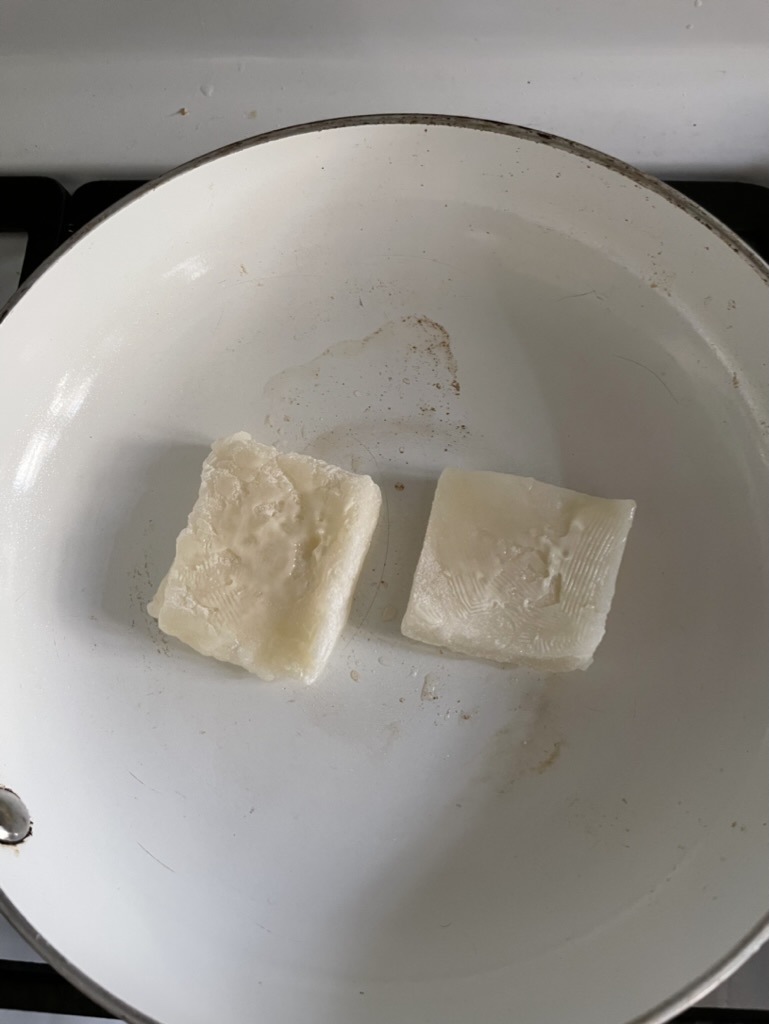
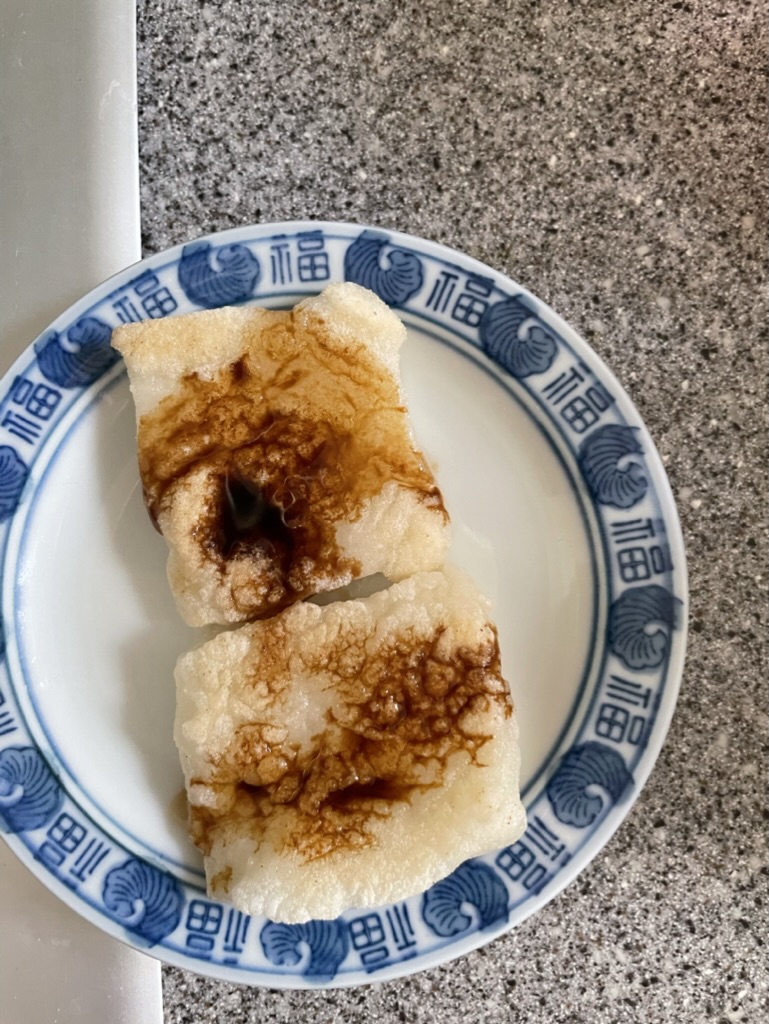
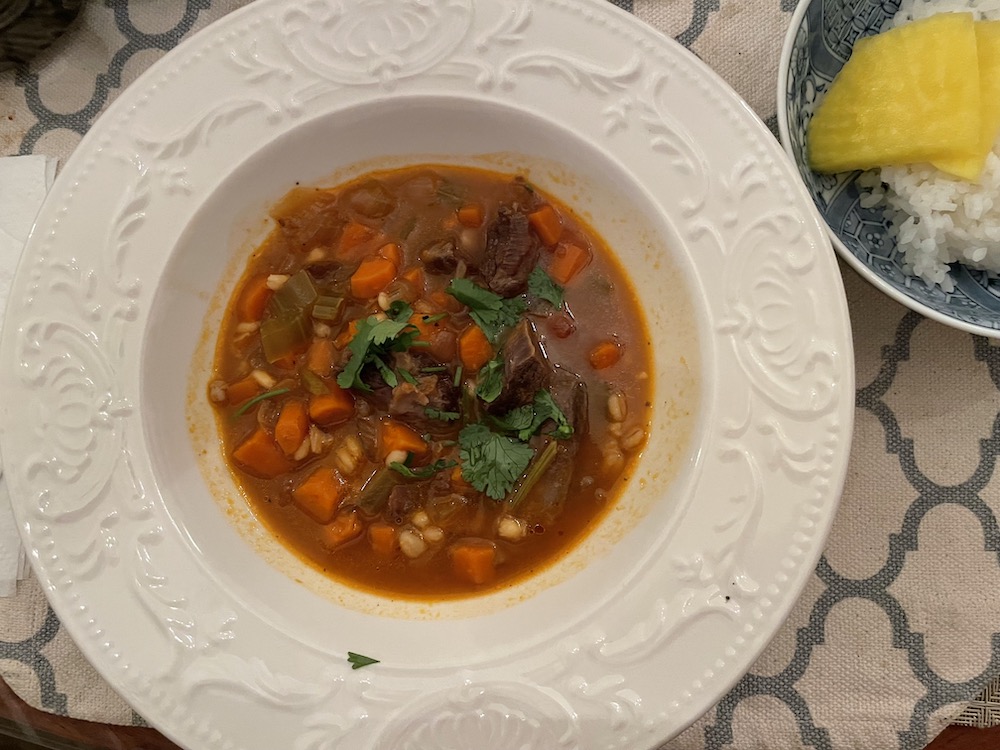

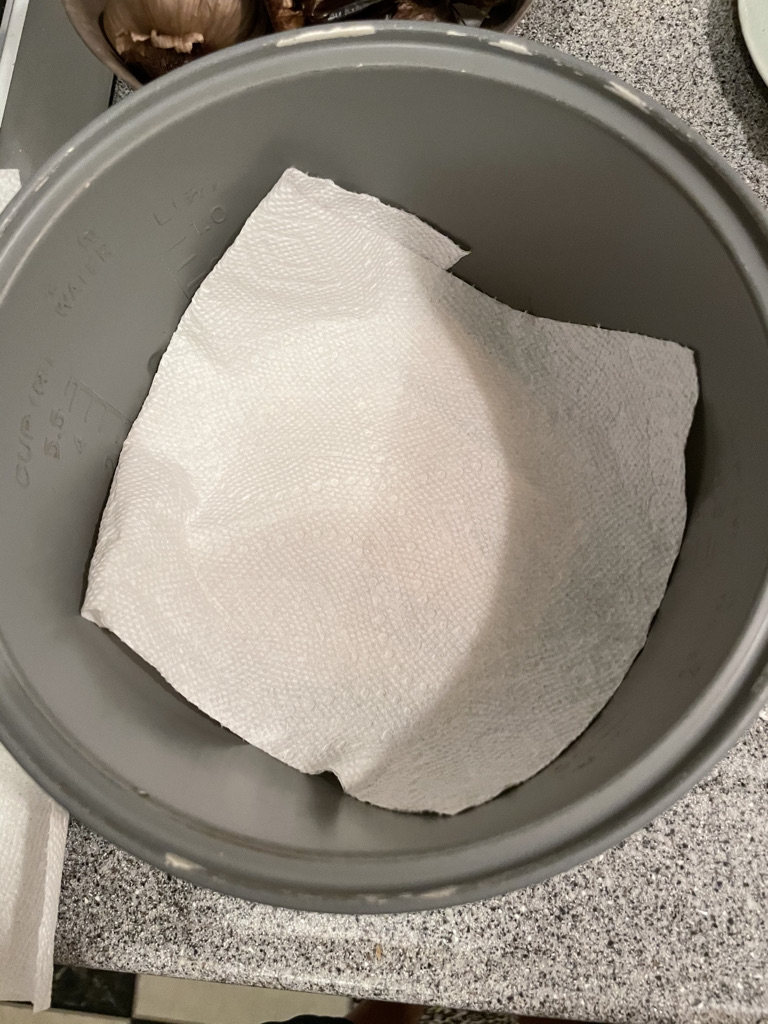
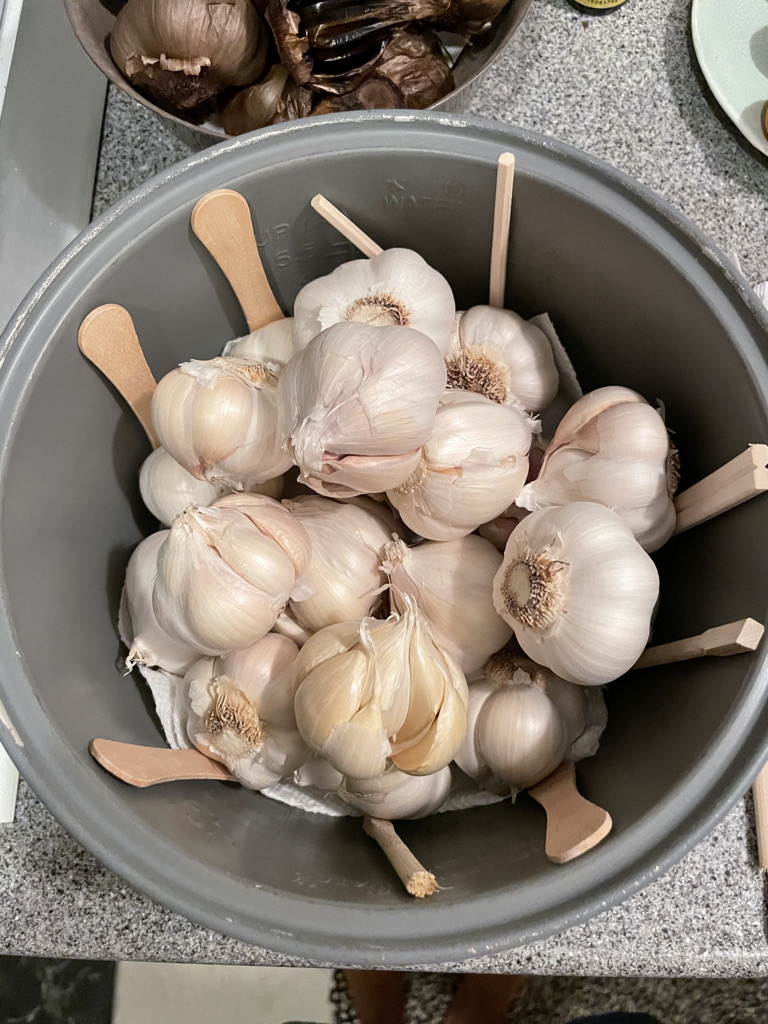
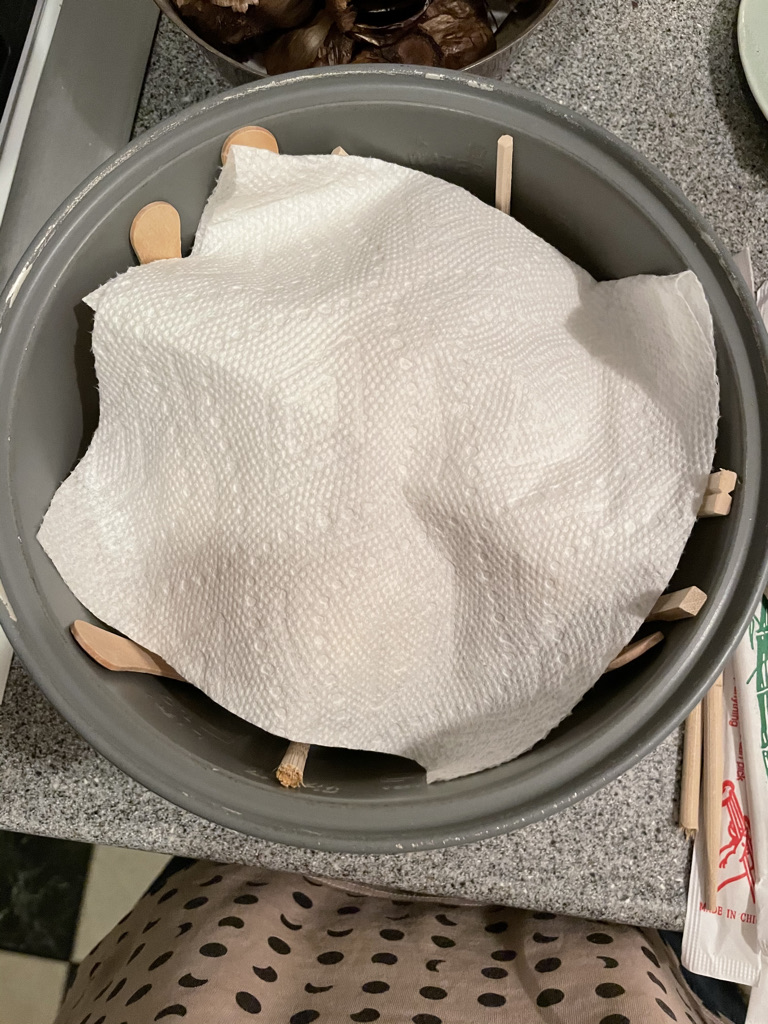
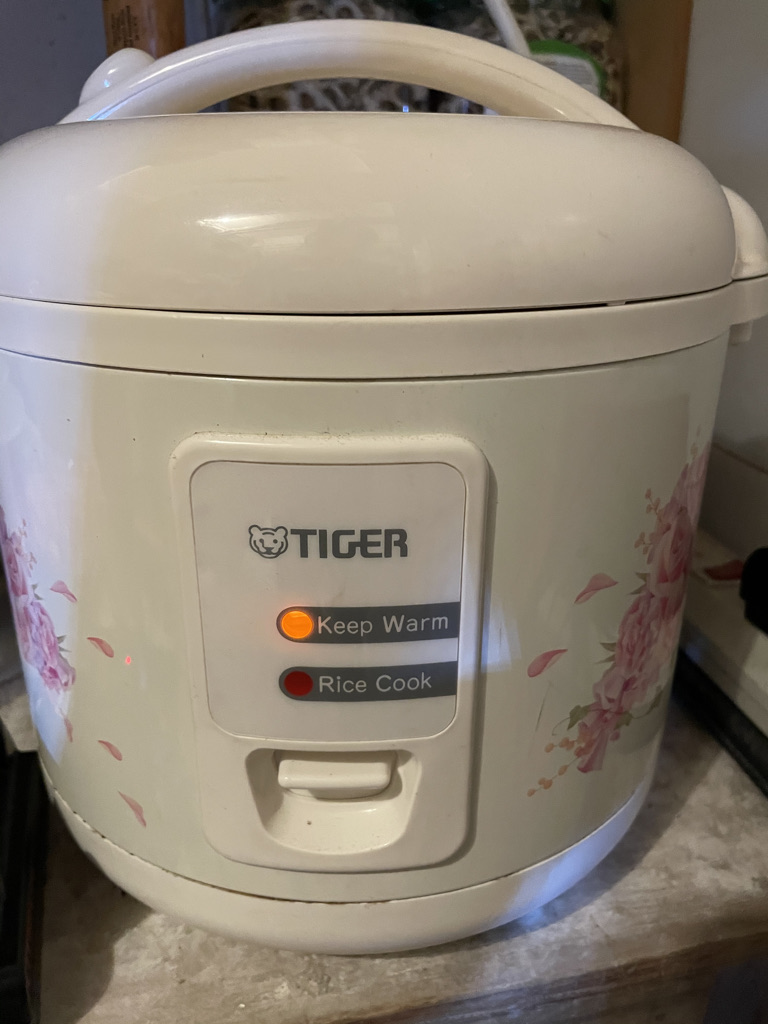

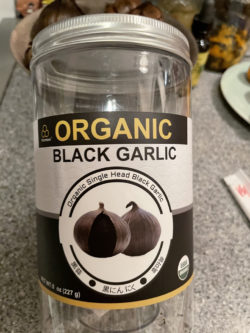
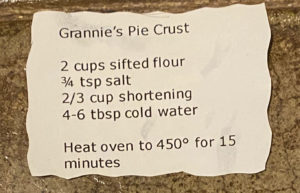 For Thanksgiving this year, we had the usual feast with a very small group of family – which meant there were a LOT of leftovers. Except for pumpkin pie. Lanakila Kitchen’s annual turkey fundraiser included a perfectly cooked 22 lb turkey with homemade stuffing, gravy, corn on the cob, sweetbread rolls, and seasoned roast potatoes, and one little 8″ pumpkin pie. Hardly enough pie to feed the family and nothing left to give away.
For Thanksgiving this year, we had the usual feast with a very small group of family – which meant there were a LOT of leftovers. Except for pumpkin pie. Lanakila Kitchen’s annual turkey fundraiser included a perfectly cooked 22 lb turkey with homemade stuffing, gravy, corn on the cob, sweetbread rolls, and seasoned roast potatoes, and one little 8″ pumpkin pie. Hardly enough pie to feed the family and nothing left to give away.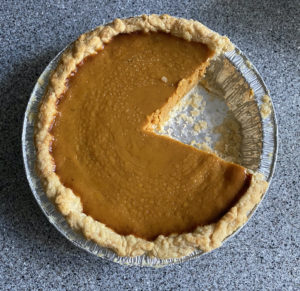 How was it? Not sure. The crust was really flakey, which I like a lot. The pumpkin filling was “meh” because I baked it for 60 minutes and by the time I checked on it, it didn’t jiggle at all. Overcooked it. This recipe was double enough for an 8″ aluminum pie pan so I will bake another one soon and keep the cooking time down.
How was it? Not sure. The crust was really flakey, which I like a lot. The pumpkin filling was “meh” because I baked it for 60 minutes and by the time I checked on it, it didn’t jiggle at all. Overcooked it. This recipe was double enough for an 8″ aluminum pie pan so I will bake another one soon and keep the cooking time down.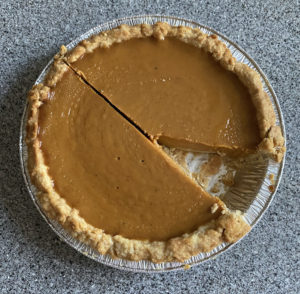

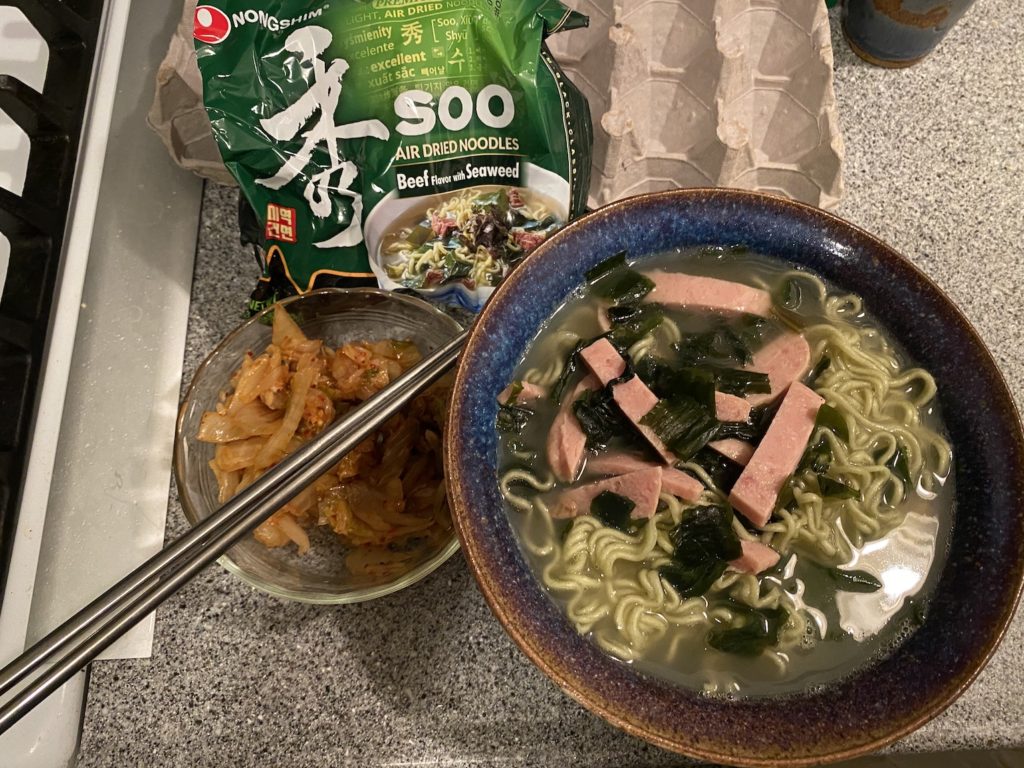
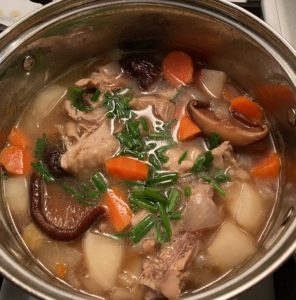 Aunty doesn’t cook BUT Hawaiian Airlines has some neat local articles and one of them was
Aunty doesn’t cook BUT Hawaiian Airlines has some neat local articles and one of them was 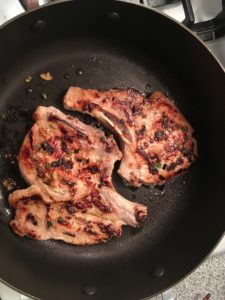
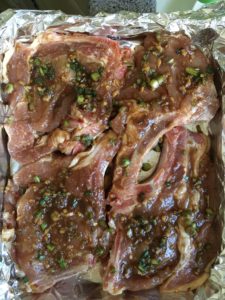 Times Super Market had pork chops on sale for $2.59/lb so for $5.30, Aunty had 4 nice pieces to work with. It was super wonderful to clean the pork chops first with water, vinegar and salt in a large bowl, and then rinse and pat dry. That winner first step made the pork seem almost kosher and less stinky. Great tip, thanks to Colin!
Times Super Market had pork chops on sale for $2.59/lb so for $5.30, Aunty had 4 nice pieces to work with. It was super wonderful to clean the pork chops first with water, vinegar and salt in a large bowl, and then rinse and pat dry. That winner first step made the pork seem almost kosher and less stinky. Great tip, thanks to Colin!